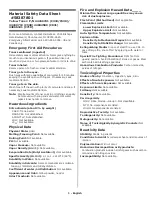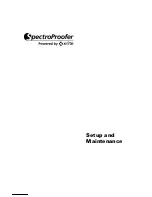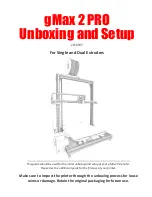
ADJUSTING PRINT QUALITY AND SPEED
7-12
XEROX DOCUPRINT 96/4635/180 NPS TROUBLESHOOTING GUIDE
The PostScript language provides a scheme for overwriting the
internal transfer function of a printing device by providing the
settransfer
and
setcolortransfer
operators. However, some Xerox
PostScript devices do not allow you to overwrite their internal transfer
function.
Typically, a master tries to replace the internal transfer function with
a null transfer function such as:
{}
settransfer
, or
{} {} {} {}
setcolortransfer
If either of the above procedures is successful, the transfer functions
return the same color levels that are passed to them without
modifying or mapping the level. On printers which do not allow the
overwriting of the transfer function, the
settransfer
operator does not
affect the mapping of gray values between the output of the print
device and specified levels of color.
Note:
Settransfer
actually sets the transfer functions for all four
color components (red, green, blue, and gray) to the same value. The
setcolortransfer
operator sets the transfer functions
individually.
Smooth curves—setflat
PostScript masters that use the PostScript operator
setflat
produce
inconsistent output across different PostScript printers.
setflat
controls curve rendering smoothness. PostScript curve operators
use cubic Bezier control points to define the curve shape. These
curves can be rendered from straight line segments. Normally the
line segments are so short that the curve appears smooth. The
setflat
operator indirectly controls the length of the straight line
segments. As stated in the
PostScript Language Reference Manual
,
second edition, “If the flatness parameter is large enough to cause
visible straight line segments to appear, the result is unpredictable.
setflat
sets a graphics state parameter whose effect is device-
dependent. It should not be used in a page description that is
intended to be device-independent.”
Invisible strokes—0 setlinewidth
PostScript masters that use the PostScript operator
setlinewidth
are
not consistent across different PostScript printers.
setlinewidth
controls the width of a stroked line. When
setlinewidth
is executed
with an input of zero, it produces a line that is one pixel wide. On
devices whose dot size is small, single-pixel-width lines may be
invisible.
Scan conversion—fill, eofill, and stroke
Scan conversion algorithms are implementation-dependent, so
different PostScript printers paint (“turn on”) different dots, resulting
in output differences. For filled circles, PostScript printers differ in the
dots they paint at the edge of the circle; thus, some printers produce
slightly larger circles than others. For large circles this is not
noticeable, but for small circles, it is.
Sections 2.2 and 6.5 of the
PostScript Language Reference Manual
,
second edition, discuss scan conversion. Section 6.5 states that
scan conversion details are not part of the PostScript standard.
Summary of Contents for DocuPrint 180 NPS Series
Page 10: ...INTRODUCTION x XEROX DOCUPRINT 96 4635 180 NPS TROUBLESHOOTING GUIDE...
Page 44: ...USING SAMPLE DOCUMENTS 6 4 XEROX DOCUPRINT 96 4635 180 NPS TROUBLESHOOTING GUIDE...
Page 58: ...CORRECTING STACKING PROBLEMS 8 2 XEROX DOCUPRINT 96 4635 180 NPS TROUBLESHOOTING GUIDE...
Page 60: ...SYSTEM UNRESPONSIVE 9 2 XEROX DOCUPRINT 96 4635 180 NPS TROUBLESHOOTING GUIDE...







































